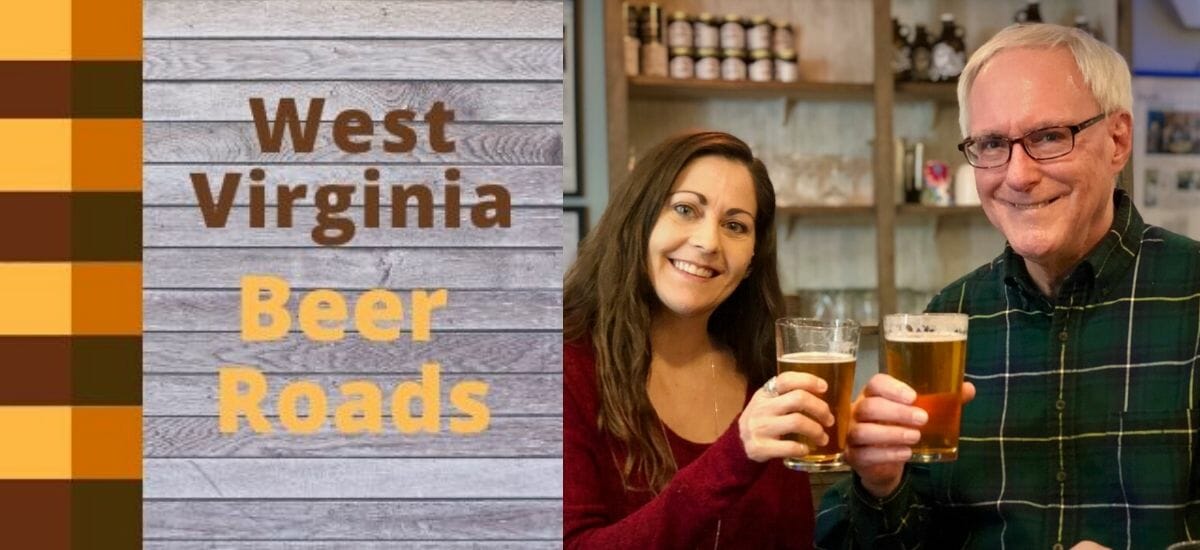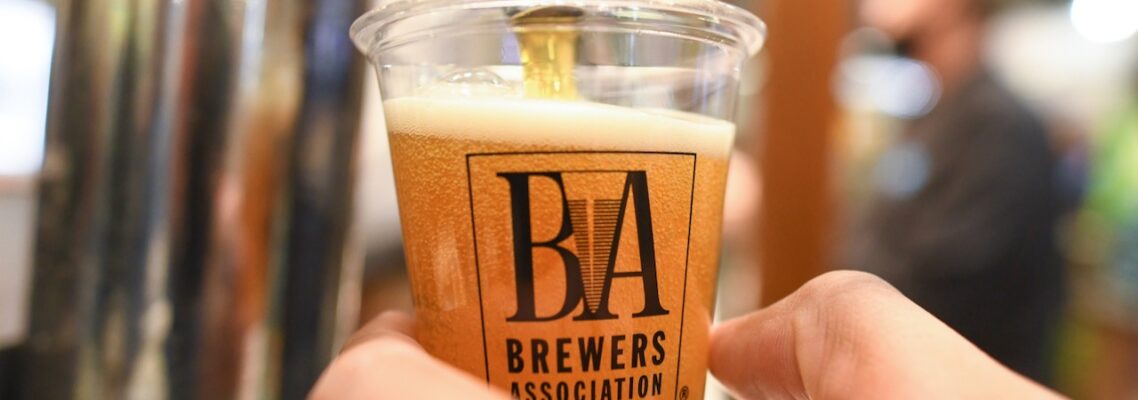
Current state of craft beer
May 20, 2022
I recently returned from the annual national Craft Brewers Conference (CBC) with a feeling that our craft brewing industry is moving in many directions at the same time. No doubt while this multidirectional development path is making the industry more cumbersome and harder to know and to explain, it may also be setting the stage for its future healthy growth.
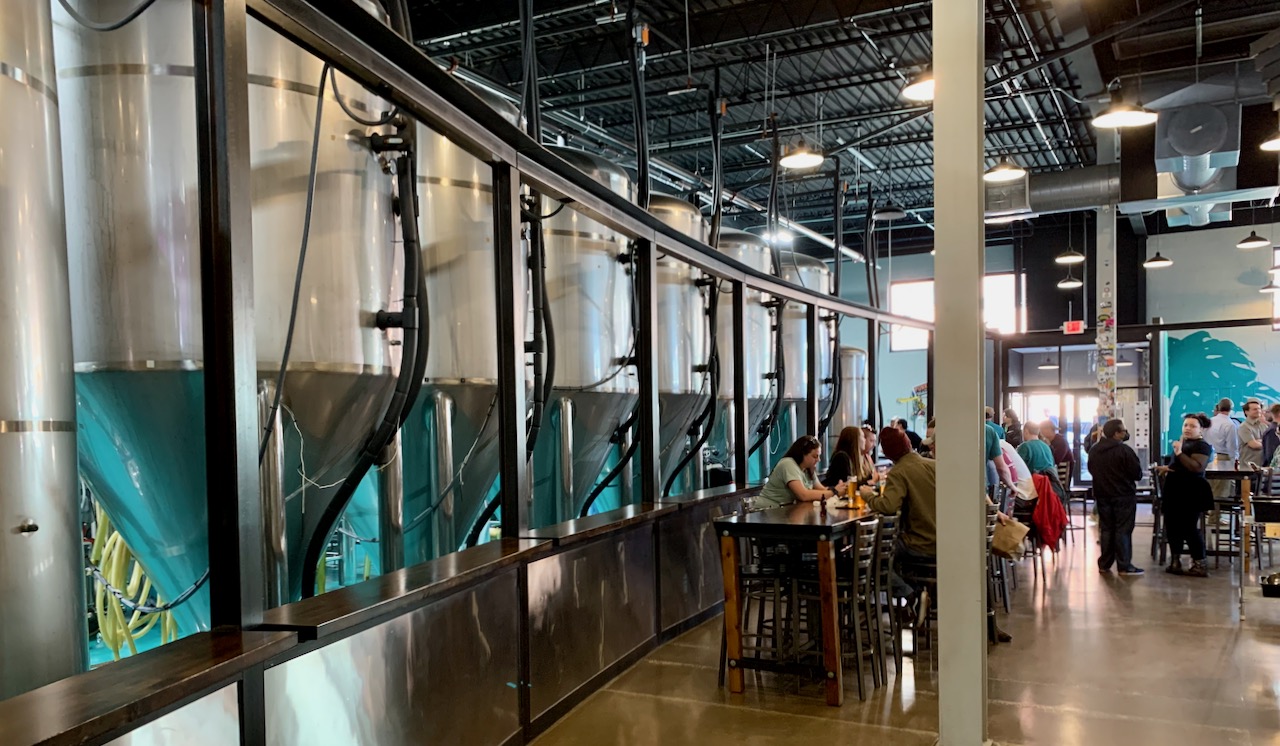
The Brewers Association, which is the trade association for small and independent brewers, held CBC in Minneapolis this year. Following are some of my takeaways from the conference that I think may be of interest to the West Virginia craft beer community.
Making strides in public affairs
The pandemic was a double edged sword for the industry. While it hurt the beer business and slowed down small brewery growth, it also created and accelerated opportunities for growth. For instance, beneficial regulatory changes have grown in scope and speed. In many state, things like allowing direct shipping and home delivery, the loosening of retailer restrictions all were accelerated because of the pandemic. The challenge now is to make permanent these pandemic related regulations — and also to improve upon and spread them.
To keep this positive regulatory momentum going, Brewers Association Board Chair Garrett Marreno said craft brewers must engage their state legislators more. They must build a stronger lobbying effort more like those in the other sectors of the beverage alcohol industry. Groups like the Distilled Spirits Council of the United State (DISCUS), Wine Institute, National Beer Wholesalers Association, and Beer Institute (dominated by big beer) are viewed as better organized and more effective in their public policy programs than are America’s small, independent brewers.
Stats show renewed growth, opportunity
BA Chief Economist Bart Watson always presents thought provoking data, and his presentation this year was no exception. He noted that even with the pandemic recovery, overall beer sales (big beer plus craft) grew by only 1% in 2021 over 2020. However, craft beer sales were up 8% in 2021. While the rebound is welcomed, there is still a ways to go.
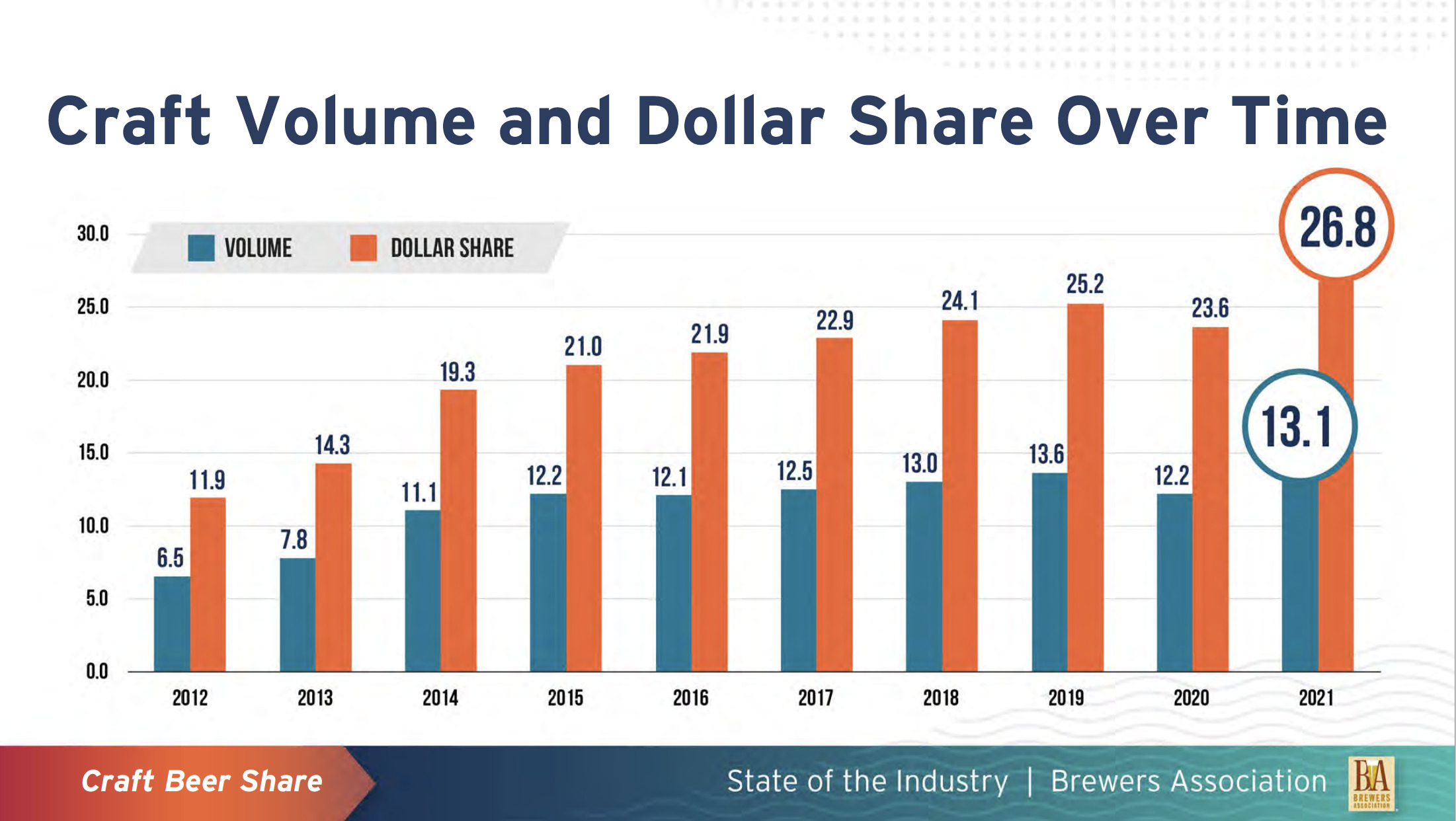
Watson noted the pandemic put a hurtin’ on distributed draft beer sales, which had been a profit center and mainstay of so many breweries. Nationally, craft brewers need distributed draft beer sales to further rebound. Distributed draft sales were still down 25% in 2021 from 2019’s high. Somewhat surprisingly with all the market negativity, only 181 breweries closed in 2021 (out of over 9,000).

Some challenges to beer sales are coming from outside the traditional beer market. Traditional beer continue to lose market share to seltzers and flavored malt beverages (FMB). Packaged ready-to-drink cocktails (RTDs) from distilled spirits manufacturers are also challenging beer for shelf space. Beer’s market lead over distilled spirits is shrinking.
The strongest sector of the craft beer industry remains your small local brewery taproom. They have recovered more quickly and seem to have weathered the storm well with few closings. With their beer sales up 21% in 2021 over 202, they continue to a very bright spot in the industry. Those that also offered canned/packaged beer in addition to draft are likely the strongest part of the industry.
After years of stagnation, the non-alcoholic beer category is growing again. A number of larger craft brewers, especially, have come out with a variety of NA beers over the past year or so. While still a niche product, it benefits from growing consumer demand for a fuller-flavored beer, but one with a low ABV. We are seeing that trend a bit even here in West Virginia with low alcohol beer (though not NA) entries by Big Timber Brewing, Weathered Ground Brewery, High Ground Brewing, and others.
Supply chain challenges and shortages are causing costs to brewers to escalate. Everything from aluminum can and employee shortages to increased barley costs are hitting the industry. Brewers, in turn, are having to raise their beer prices. It’s a much broader cost escalation than the one seen with hops a number of years back. Will increasing prices cause craft beer growth to hit the wall? We will see.
Top issues facing craft brewers

We heard from Tim Wu, Special Assistant to the President for Technology and Competition Policy, that the White House sees positives in the broad diversification of small brewers as small businesses helping their communities grow. The geographic spread of brewers and their innovation in beers, brewing techniques and market development are all big plusses. On the negative side, Wu said we must watch carefully the continued merger and acquisition activity that reduces competition. He is concerned about unfair trade practices where larger breweries provide something of value or pay for distribution which locks out small breweries. He asked small brewers and consumers to report unfair trade practices they see to alcohol regulators.

Keynote speaker Natalie Cilurzo of Russian River Brewing Company spoke about the importance of brewers putting good works in the forefront of their business missions. She discussed how a good works mission pays benefits across many business categories, such as more strongly connecting you to your community and helping you attract like-minded employees, which creates lower employee turnover. She talked about things that I have noticed about our local brewers: They are some of the most charitable minded people in our business community. And the good works need to continue beyond charity to building a welcoming business environment for people of all genders, races and ethnicities. I wrote about this topic in a recent Charleston Gazette-Mail column.
One thing exceedingly evident at CBC is the diversification of small brewers into a wider and wider variety of products. Today you’ll find everything from seltzers, ciders, FMBs, and alcohol-free beer to dozens of new beer styles and even food products containing beer. One could see from the trade show exhibits that breweries adding distillation equipment is also a hot area. The industry is no longer dominated by just one kind of brewery making traditional beer styles like it was 15 years ago. Today, it is much more diverse, creative and different. You can’t count on one craft brewery being very similar to the one down the street — and that makes the industry even harder to define and understand.
On a local note it was nice to have some West Virginia brewers at CBC this year. Folks from Big Timber Brewing and Berkeley Springs Brewing, and maybe others, were in attendance.
Takeaways from the EXPO at CBC
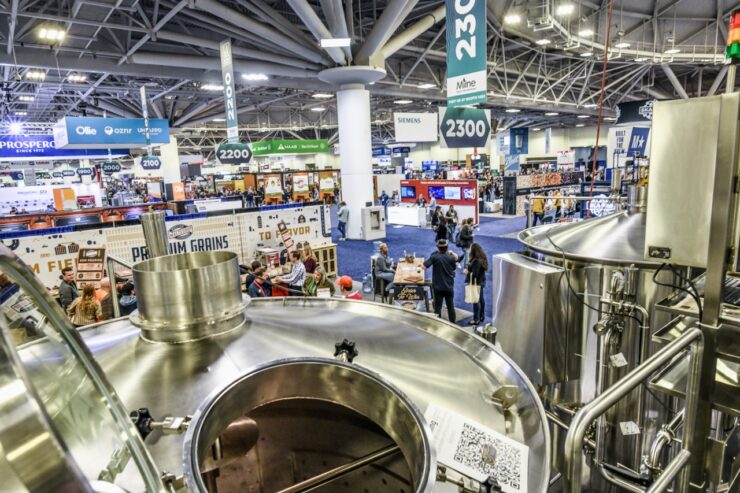
Some various and sundry items caught my attention at Expo, the large brewing industry trade show connected to the Craft Brewers Conference. Here are a few.
ElastiTag by Bedford
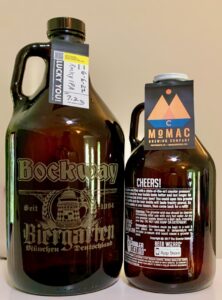
Gumband/Elastic bottle-necker labels for growlers. If you’re like me, you hate having paper labels glued onto your growlers. You don’t like writing directly on the growler either. It’s a mess. Maybe someone in WV is using these ElastiTag growler labels, but I haven’t seen them. It’s simply a rubber/elastic strap fixed to a label card. Everything is preprinted on the card except the things you need to write in at the point of sale (beer name/style, ABV, sale date). The bartender fills in the necessary info with a Sharpie pen, then stretches the band around the bottle neck. Voila. No more sticky messes or writing all over my growler. Go to ElastiTag.com for more information.



Put your own design on the tags. Anything you want.
Berkeley Yeast
This is a company doing exciting work designing yeast for specific brewing purposes using the latest bioengineering technologies. Brewers and yeast scientists are in a constant state of managing yeast. You see, yeast is one of the most easily genetically modified organisms you’ll likely ever work with. Brewers yeast will modify itself (mutate) naturally over each generation anyway, so its genome seems a natural subject for purposeful modification work.
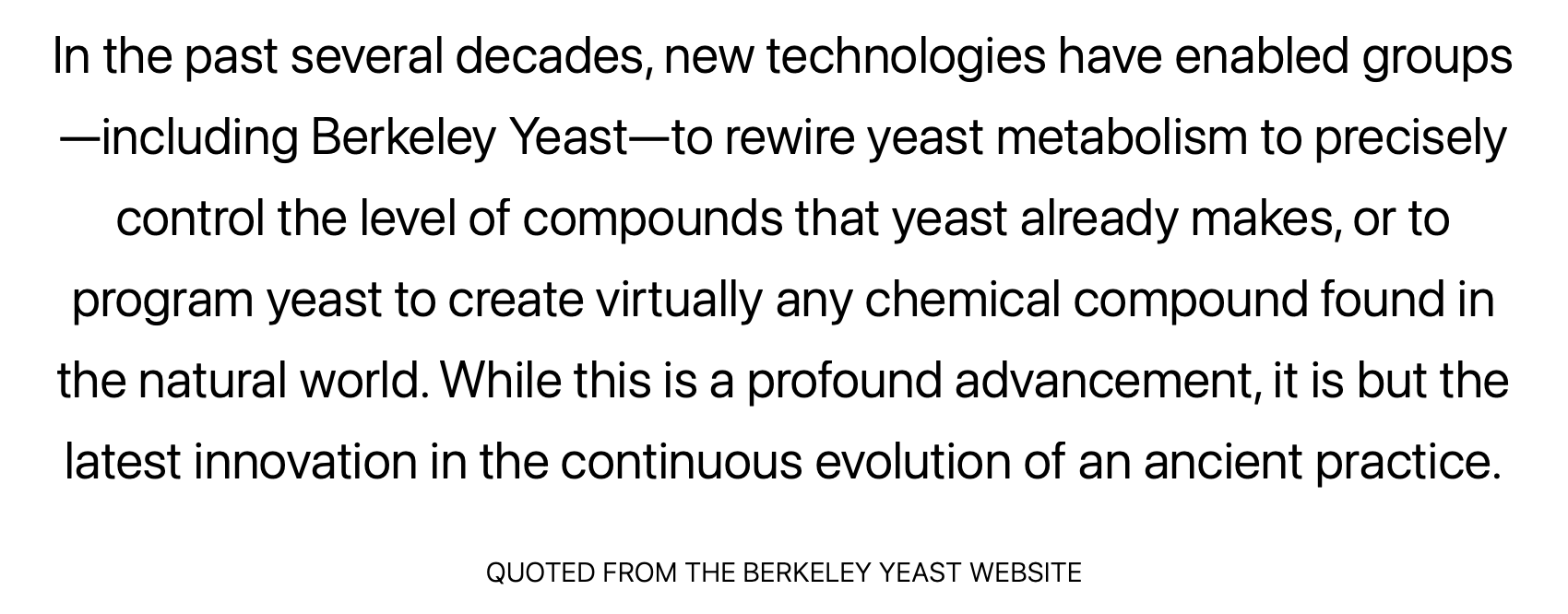
By using science that breaks the genetic code for yeast’s properties in fermentation and applying new technologies allowing purposeful gene modification, Berkeley Yeast produces special yeasts for brewers that add value and solve problems. For instance, a Tropics strain produces enhanced guava-passion fruit flavors that you’ll want to load up in your next Juicy-Hazy IPA or a Diacetyl Free strain that cuts fermentor time in half by eliminating the need for a diacetyl rest. Berkeley Yeast has a bunch of other designer yeasts that could help out many brewers looking to improve their beers. Or it could take beer in whole new directions.
Sweet Haven Tonics
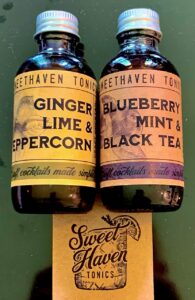
This small business started by Leah Treleven at her home during the pandemic is a true flavor rocket. Made with all whole fruits, herbs and spices at her shop in New Ulm, Minnesota, she has hit on a production method that perfectly meshes and complements her extraordinary taste creativity. She produces a set of flavoring tonics that are so incredibly tasty and easy to use that it’s hard to believe how good the results are. When she told me her flavoring tonics were all based on apple cider vinegar (ACV), I took a step back. But when I sampled them, I took a jump forward. The ACV provides a healthy acidic base from which to bloom the fruit, herb, and spice flavors. Who would have thunk it? There is no vinegar taste whatsoever.
Sweet Haven flavors include mouth-watering delicacies such as Pineapple Turmeric & Jalapeño | Blueberry Mint & Black Tea | Spiced Cherry & Orange | Strawberry Basil & Chili | Grapefruit Mint & Rosemary | and Ginger Lime & Peppercorn. As an example, the ingredient list for Spiced Cherry & Orange lists ACV, pure cane sugar, cherries, oranges, ginger root, cinnamon, clove, star anise, nutmeg, and salt. You typically use 3/4-oz. to 1-oz. of tonic per cocktail.
Her primary market is selling the tonics as quick cocktail and mocktail mixers for the home bar, but she also has commercial customers. Yes, they are premium priced compared to cheap bar supplies, but, oh my, the flavors are out of this world. Sold in 4, 8, and 16 oz. bottles. Available at sweethaventonics.com
Nectaron® Hop
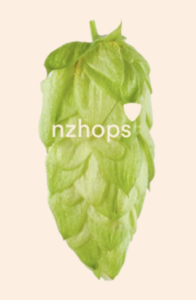
New Zealand hop growers have developed so many great hop varieties—Nelson Sauvin, Motueka, Pacific Jade, and Dr. Rudi for example—but you can’t rest on your laurels. Last fall, with the introduction of the Nectaron® hop, they have reached a new level in hops designed to support the tropical, juicy flavors the market loves in its beer today. Nectaron brings loads of intense tropical pineapple, passion fruit and stone fruit characters. It’s a hop easy to fall in love with. It’s one I’m hoping local WV brewers experiment with very soon.
.
SampleOx by DraughtLab
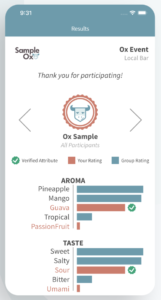
If I were a brewer, I would immediately get a subscription to SampleOx and use it regularly. For brewers, it is a much improved method of obtaining truly useful beer reviews from consumers or even from a brewery’s own tasting panels. For consumers, it is a structured, yet easy way to describe what you’re tasting using standard flavor terms. And you can compare yourself against friends and experts.
A brewer enters a beer into the SampleOx system. Consumers, using the free SampleOx app, are then guided through a series of quick and helpful check boxes for aromas, flavors, mouthful, and so on, to describe their reaction to the beer. Reviews are then aggregated for the beer, and the brewer sees a detailed report of what the tasters get from its beer. It’s immensely more useful data than a 1 to 5 number rating, and much more standardized and detailed than the typical open-ended review platforms/websites.
It’s already in use by craft brewers you’re familiar with, like Rhinegeist, Highland, Great Lakes, New Realm, Other Half, Grimm, and many more. The SampleOx consumer app is available free in your favorite app store. Check it out.

